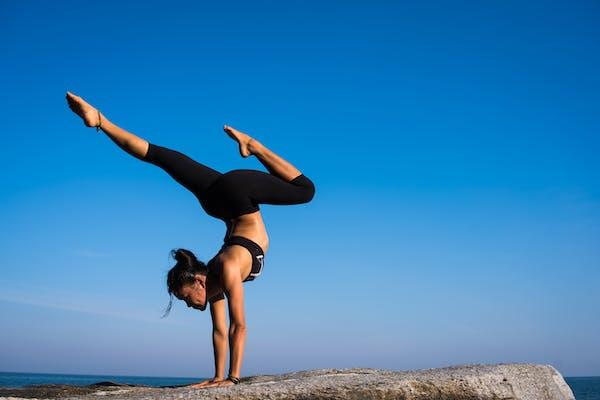Is Pilates Better For You Than Yoga?
Whether you’re new to the game of fitness and wellness or are curious about what the hype with pilates is all about, it can be hard from an outsider’s perspective to truly understand the difference between the two practices.
Pilates seems to have taken the women’s American fitness regime by storm and has made its way over to the UK. Both are useful for improving your strength, flexibility and mindfulness, and both are accompanied by the goal of toning up your body to reflect how strong and healthy you are.
On the surface, there are many similarities between both practices:
- They aim to improve the mind and body
- Both emphasise the importance of breathing techniques
- Minimal equipment is needed
- Improve strength and flexibility
- Some of the exercises are similar or the same
It’s important to note that there are many differences between the two practices. Physically, the main difference is that yoga focuses on holding static poses, whereas pilates needs movement to challenge your stability. You could say they go hand in hand.
What is Pilates?
It is important to note that Pilates has been around since the 1900s but has only really gained momentum in the past few decades. Its inverter, Joseph Pilates, developed Contrology, a form of exercise that was meant to rehabilitate injured athletes or dancers by correcting muscular imbalances and improving their stability, flexibility and overall full-body strength.
Joseph Pilates also went on to create pieces of equipment that are still used today, such as the ladder barrel, reformer and Wunda chair. After his passing, their practice got named, as we all famously know it, pilates.
Pilates is a low-impact exercise that requires stabilising your core before going through a series of range-of-motion exercises. You have the choice to use the machines or simply do it on the mat with resistance bands or solo.
What are the benefits of Pilates?
Here are all the benefits that come with the popular practice Pilates:
- Increase core strength, which helps stability
- Improves your posture and spine strength
- Increase lung capacity
- Flexibility
- Helps with toning and weight control
- Ease lower back pain
- Increase bone density
- Linked to improving mental health and energy levels
Pilates serves as a significant aid in physical recovery. A review of 23 studies highlighted its effectiveness in alleviating pain and disability among individuals with diverse conditions like back pain, neck pain, scoliosis, and multiple sclerosis.
Although not aerobic, Pilates effectively diminishes stress, indirectly supporting heart health. It’s generally safe for pregnant women, seniors, and children, with beginners advised to seek guidance from certified Pilates instructors.
What is Yoga?
Yoga is an ancient spiritual practice rooted in India from over 5,000 years ago. As a fitness strategy, it blends physical poses with breath techniques, blending mind and body to build strength, flexibility and mental awareness.
A key principle of yoga is working with the chakras, the seven energy points within your body known as the crown, third eye, throat, heart, solar plexus, sacral and root. The mind’s flow through these chakras shapes our perception of reality. When a chakra is obstructed, it can lead to mental or physical problems. Yoga practice aims to activate and harmonise these chakras, with specific poses aiding various chakras.
With modern adaptations and influences, yoga has evolved and new styles have emerged, each with its unique characteristics. There are poses for beginners, such as hatha yoga, so it’s easy to get involved at any point.
The overall purpose of yoga is to connect the body, mind, and spirit in every pose.
What are the benefits of Yoga?
Here are all the benefits of this ancient practice:
- Ease lower back and neck pain
- Improves overall balance and flexibility
- Linked to a better night’s sleep
- It helps with weight loss
- Ease symptoms of menopause
- Ease stress-related illnesses e.g. headaches
- Great for those struggling with depression or anxiety
Which is Better for You?
Deciding between Pilates and yoga can be challenging. Pilates is ideal for boosting strength and flexibility, while yoga focuses on overall wellness. Your choice may depend on available classes and the expertise of instructors.
Although yoga suits men, some might feel their flexibility isn’t sufficient. Certain poses affect men and women differently, yet both genders gain from yoga practice. Similarly, Pilates might face challenges in attracting males. However, it’s worth noting that a man, Joseph Pilates, invented it. He developed its principles while working with male soldiers.
If you have time for them both, you can mix it up and on days you have more energy, go for pilates and on others, if you want to take it easy or need to align those chakras, go for yoga. They both bring a lot of benefits to your life so it would be a loss to only do one over the other.
A great way to begin yoga or Pilates is by joining a class, putting on a pair of comfy seamless leggings and shifting the focus from perfecting movements to embracing the experience. Classes offer flexibility, allowing for adjustments in exercises to match your comfort level. It’s alright to modify exercises or take breaks if a movement doesn’t suit you.
